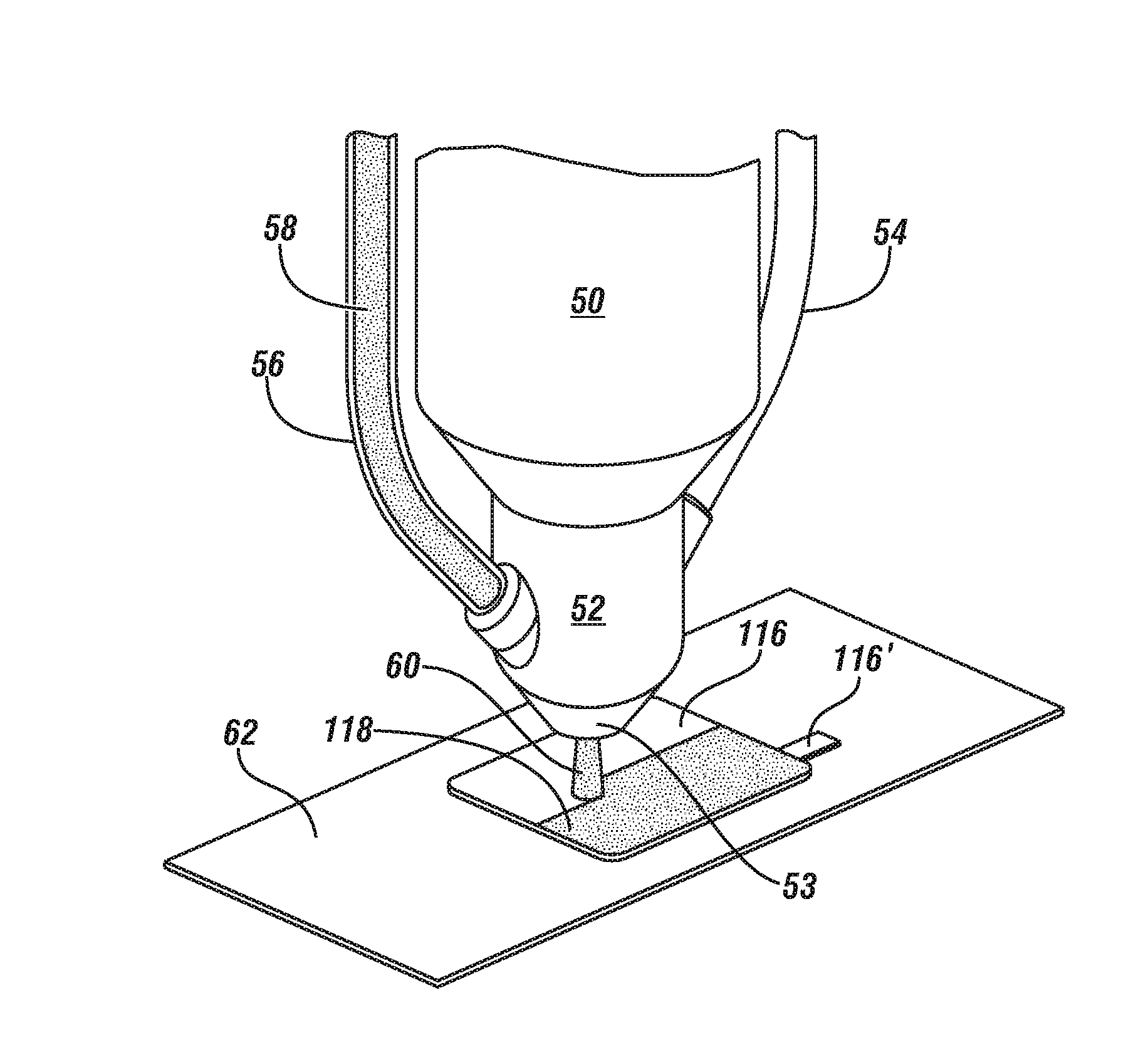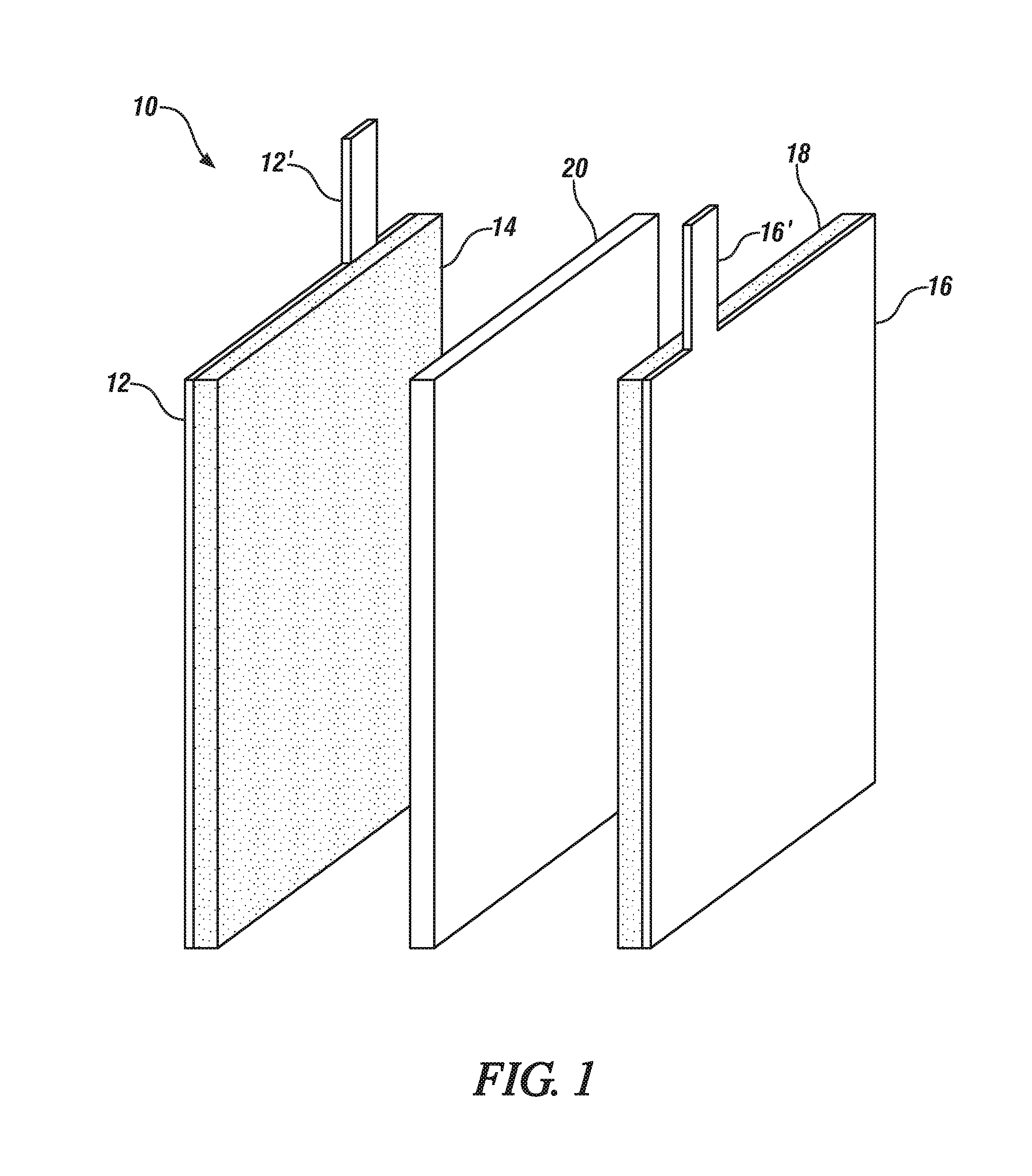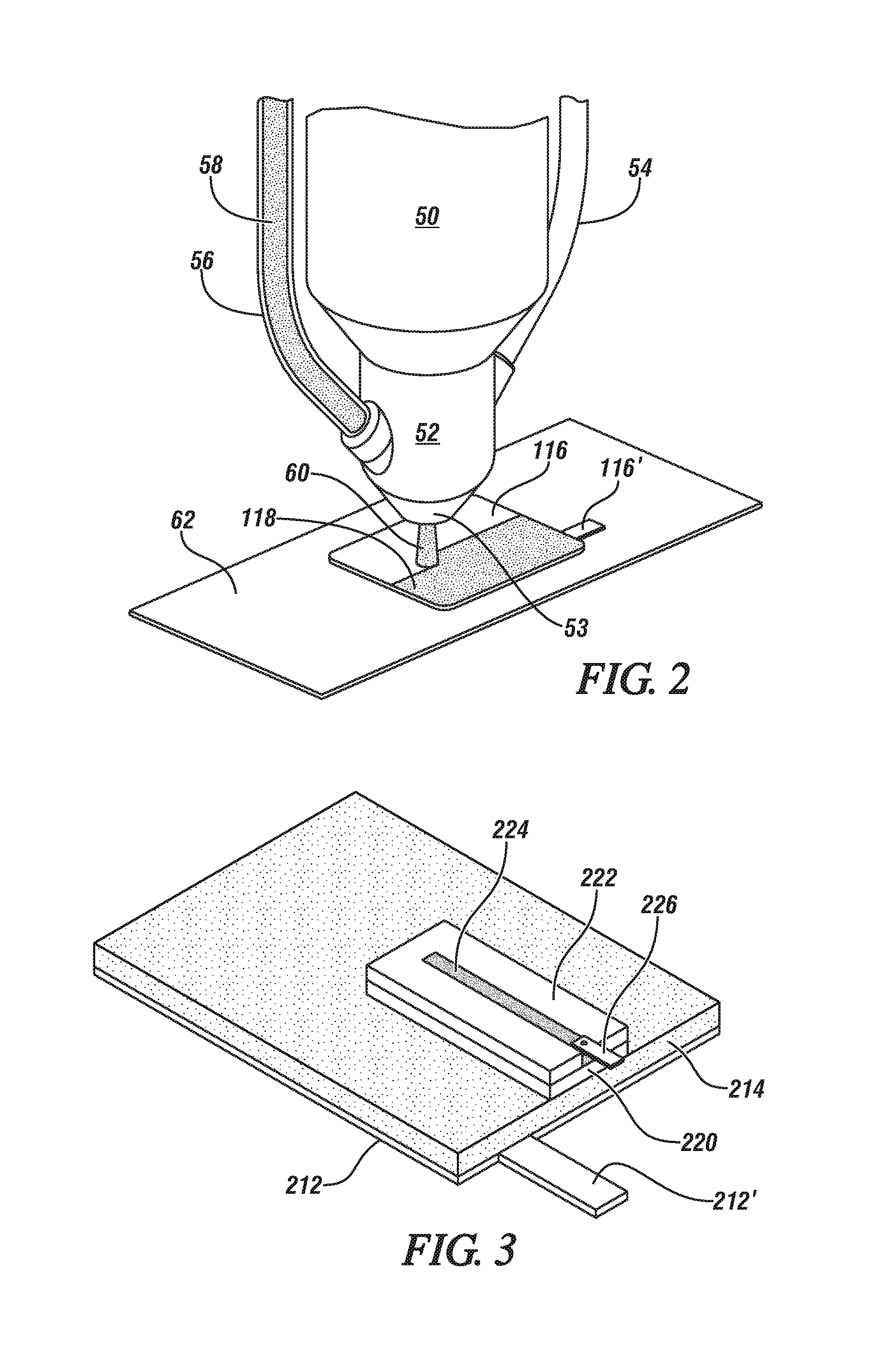Making lithium secondary battery electrodes using an atmospheric plasma
a lithium secondary battery and atmospheric plasma technology, applied in the direction of batteries, sustainable manufacturing/processing, cell components, etc., can solve the problems of limiting the electrical capacity of the cell, requiring extended manufacturing time for wet mixtures of electrode materials, and thickness of respective active material layers
- Summary
- Abstract
- Description
- Claims
- Application Information
AI Technical Summary
Benefits of technology
Problems solved by technology
Method used
Image
Examples
Embodiment Construction
[0020]An active lithium-ion cell material is an element or compound which accepts or intercalates lithium ions, or releases or gives up lithium ions in the discharging and re-charging cycling of the cell. A few examples of suitable electrode materials for the negative electrode of a lithium ion cell are graphite, silicon, alloys of silicon with lithium or tin, silicon oxides (SiOx), and lithium titanate. Examples of positive electrode materials include lithium manganese oxide, lithium nickel oxide, lithium cobalt oxide and other lithium-metal-oxides. Other materials are known and commercially available. One or more of these materials may be used in an electrode layer. In accordance with practices of this invention as will be described in more detail below in this specification, the respective electrode materials are initially in the form of submicron to micron-size particles, in the range of tens of nanometers to tens of microns, that are either coated with a thin film of a conducti...
PUM
| Property | Measurement | Unit |
|---|---|---|
| Length | aaaaa | aaaaa |
| Length | aaaaa | aaaaa |
| Temperature | aaaaa | aaaaa |
Abstract
Description
Claims
Application Information
 Login to View More
Login to View More - R&D
- Intellectual Property
- Life Sciences
- Materials
- Tech Scout
- Unparalleled Data Quality
- Higher Quality Content
- 60% Fewer Hallucinations
Browse by: Latest US Patents, China's latest patents, Technical Efficacy Thesaurus, Application Domain, Technology Topic, Popular Technical Reports.
© 2025 PatSnap. All rights reserved.Legal|Privacy policy|Modern Slavery Act Transparency Statement|Sitemap|About US| Contact US: help@patsnap.com



